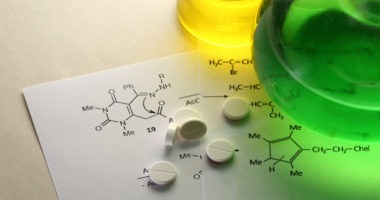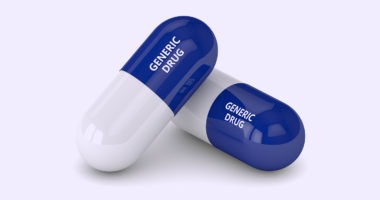Finding the Niche in Orphan Drugs
In 2013, 17 new orphan drugs were launched in the US, the highest number of orphan drugs introduced to the US market in more than a decade.
As pharmaceutical companies seek ways to improve R&D productivity and reach commercialization, they are exploring various strategies in their business models. Although still representing a niche in the overall pharmaceutical market, orphan drugs represent one approach to meet unmet medical need and gain coveted regulatory approval and the path to commercialization. Reflecting the move to more specialized medicines, the number of new orphan drugs launched in 2013 reached 17, the highest number of orphan drugs introduced in the US market in more than a decade. Long considered the purview of smaller, emerging pharmaceutical/biopharmaceutical companies, orphan drugs also are attracting the interest of the pharmaceutical majors, with Eli Lilly, Johnson & Johnson, Bayer, and GlaxoSmithKline among the companies with orphan drug approvals of new molecular entities and new biologics license applications in 2013 and 2014.
Finding a niche
The passage of the Orphan Drug Act of 1983 in the United States provided a mechanism to facilitate the development and commercialization of orphan drugs. FDA’s Orphan Drug Designation program provides orphan status to drugs and biologics that are defined as those intended for the safe and effective treatment, diagnosis, or prevention of rare diseases/disorders that affect fewer than 200,000 people in the US, or that affect more than 200,000 persons but are not expected to recover the costs of developing and marketing a treatment drug. Since 1983, FDA has approved more than 450 drugs and biologic products for rare diseases. In the decade prior to the Orphan Drug Act, fewer than 10 treatments had been developed by industry for rare diseases, according to FDA.
Perhaps the best known example of a company developing and commercializing orphan drugs is Genzyme, now part of Sanofi. Its first such product, Cerezyme (imiglucerase for injection), which is indicated for long-term enzyme replacement therapy for pediatric and adult patients with a confirmed diagnosis of Type 1 Gaucher disease, was launched in 1994 and other products followed. Fabrazyme (ceramide trihexosidase/alpha-galactosidase) to treat Fabry disease was launched in Europe in 2001 and soon expanded to the US and other regions. Aldurazyme (laronidase) used to treat patients with the Hurler and Hurler-Scheie forms of mucopolysaccharidosis I (MPS I), came to market in 2003. In 2006, Myozyme (recombinant human acid alpha-glucosidase) was approved in the US to treat infantile Pompe disease and all Pompe patients in Europe and other regions. And Lumizyme (recombinant human acid alpha-glucosidase) was approved in the US in 2009 specifically to treat late-onset Pompe disease.
Assessing the opportunities
Orphan drugs represent a niche opportunity in the global pharmaceutical market. The global market for orphan drugs was valued at $82.6 billion in 2011 and nearly $86 billion in 2012, according to BCC Research. BCC projects that the global market will reach $112 billion in 2017, after increasing at a five-year compound annual growth rate (CAGR) of 5.4%. In the last five years, 53 orphan drugs were launched in the US, which included 17 in 2013, compared with 29 in the prior five years, according to a recent analysis, Medicine Use and Shifting Costs of Healthcare: A Review of the Use of Medicines in the United States in 2013, by the IMS Institute of Health Informatics. These 17 orphan drugs launched in the US in 2013 included approval of nine new molecular entities (NMEs) and new biologics license applications (BLAs) by FDA’s Center for Drug Evaluation and Research (CDER) (see Table I), two products approved by FDA’s Center for Biologics Evaluation and Research, and six products approved by CDER in late 2012 but launched in 2013. Among the nine approvals by CDER in 2013, seven drugs were from the large pharmaceutical companies: Bayer’s Adempas (riociguat), Boehringer Ingelheim’s Gilotrif (afatinib dimaleate), Genentech/Roche’s Gazyva (obinutuzumab), Genzyme/Sanofi’s Kynamro (mipomersen sodium), two drugs by GlaxoSmithKline, Mekinist (trametinib dimethyl sulfoxide) and Tafinlar (dabrafenib mesylate), and Janseen Biotech’ /Pharmacyclics’Imbruvica (ibrutimib) (see Table I).
| Table I: 2013 Orphan Drug Approvals for New Molecular Entities (NMEs) and New Biologics License Applications (BLAa) as approved by FDA’s Center for Drug Evaluation and Research
|
|||
| Company | Proprietary Name (Active Ingredient) |
Dosage Form/Route of Administration |
Orphan Designation |
| Actelion Pharmaceuticals | Opsumit (macitentan); NME | Tablet/Oral | Treatment of pulmonary arterial hypertension |
| Bayer Health Care Pharmaceuticals |
Adempas (riociguat); NME | Tablet/Oral | Treatment of pulmonary arterial hypertension; Treatment of chronic thromboembolic pulmonary hypertension |
| Boehringer Ingelheim | Gilotrif (afatinib dimaleate); NME | Tablet/Oral | Treatment of epidermal growth factor receptor (EGFR) mutation- positive non-small cell lung cancer |
| Celgene | Pomalyst (pomalidomide); NME | Capsule/Oral | Treatment of multiple myeloma |
| Genentech/Roche | Gazyva (obinutuzumab); BLA | Injectable/Injection | Treatment of chronic lymphocytic leukemia |
| Genzyme/Sanofi | Kynamro (mipomersen sodium); NME |
Solution/Subcutaneous | Treatment of homozygous familial hypercholesterolemia |
| GlaxoSmithKline | Mekinist (trametinib dimethyl sulfoxide); NME |
Tablet/Oral | Treatment of Stage IIb through Stage IV melanoma |
| GlaxoSmithKline | Tafinlar (dabrafenib mesylate); NME |
Capsule/Oral | Treatment BRAF V600 mutation positive Stage IIB through IV melanoma |
| Janssen Biotech/ Pharmacyclics |
Imbruvica (ibrutimib); NME | Capsule/Oral | Treatment of patients with mantle cell lymphoma who have received at least one prior therapy |
| Products approved by FDA’s Center for Biologics Research and Evaluation not included.
GlaxoSmithKline agreed to sell its oncology drug portfolio to Novartis in April 2014. The proposed transaction includes both Mekinist (trametinib) and Tafinlar (dabrafenib mesylate). Janssen Biotech, part of Johnson & Johnson, and Pharmacyclics are partnered for Imbruvica (ibrutimib). Imbruvica was also approved in January 2014 for an orphan indication for treating chronic lymphocytic leukemia. Roche Glycart AG, a wholly owned, independent research unit of Roche, discovered Gazyva. In the US, Gazyva is part of a collaboration between Genentech and Biogen Idec. Sanofi’s subsidiary, Genzyme, partnered with ISIS Pharmaceuticals and Genzyme for the development of Kynamro. Source: FDA |
|||
Thus far in 2014, seven orphan drugs have been approved by FDA’s CDER as NMEs and BLAs, which include three from the large pharmaceutical companies (see Table II). These include AstraZeneca’s Myalept (metreleptin), Eli Lilly’s Cyramza (ramucirumab), and Janssen Biotech’s Sylvant (siltuximab). Myalept is indicated as an adjunct to diet as replacement therapy for the treatment of complications of leptin deficiency in patients with congenital or acquired generalized lipodystrophy. Myalept is a recombinant analogue (laboratory-created form) of human leptin. AstraZeneca is working to complete the transfer of the BLA for Myalept from Bristol-Myers Squibb Company to AstraZeneca as part of the acquisition of the diabetes alliance assets, including Myalept and Amylin Pharmaceuticals, which was completed on February 1, 2014. Eli Lilly’s Cyramza (ramucirumab) was approved as a single-agent treatment for patients with advanced or metastatic gastric cancer or gastroesophageal junction adenocarcinoma with disease progression on or after prior fluoropyrimidine- or platinum-containing chemotherapy. Eli Lilly gained the drug from its acquisition of ImClone Systems in 2008. Cyramza is a vascular endothelial growth factor (VEGF) Receptor 2 antagonist that specifically binds VEGF Receptor 2 and blocks binding of VEGF receptor ligands VEGF-A, VEGF-C, and VEGF-D. VEGF Receptor 2 is an important mediator in the VEGF pathway. In an in vivo animal model, ramucirumab inhibited angiogenesis. Angiogenesis is a process by which new blood vessels form to supply blood to normal healthy tissues as well as tumors, enabling cancer to grow. Janssen Biotech’s Sylvant (siltuximab) was approved for the treatment of patients with multicentric Castleman’s disease (MCD), a rare blood disease, who are human immunodeficiency virus (HIV) negative and human herpesvirus-8 (HHV-8) negative. The drug is an IL-6 antagonist biologic therapy administered as an intravenous (IV) infusion once every three weeks.
| Table II: 2014 Orphan Drug Approvals for New Molecular Entities (NMEs) and New Biologics License Applications (BLAs) as approved by FDA’s Center for Drug Evaluation and Research*
|
|||
| Company | Proprietary Name (Active Ingredient) |
Dosage Form/Route of Administration |
Orphan Designation |
| AstraZeneca | Myalept (metreleptin); BLA | Injectable/Injection | Treatment of metabolic disorders secondary to lipodystrophy |
| BioMarin Pharmaceutical | Vimizim (elosulfase alfa); BLA | Injectable/Injection | Use in the treatment of mucopolysaccharidosis (MPS) Type IV A (Morquio A syndrome) |
| Chelsea Therapeutics | Northera (droxidupa); NME | Capsule/Oral | Treatment of symptomatic orthostatic hypotension in specified patients |
| Eli Lilly | Cyramza (ramucirumab); BLA | Injectable/Injection | Treatment of gastric cancer |
| Janssen Biotech | Sylvant (siltuximab); BLA | Injectable/Injection | Treatment of Castleman’s disease |
| Paladin Therapeutics | Impavido (miltefosine); NME | Capsule/Oral | Treatment of leishmaniasis |
| Vanda Pharmaceuticals | Hetlioz (tasimelteon); NME | Capsule/Oral | Non-24-hour sleepwake disorder in blind individuals without light perception |
| *Approvals through April 28, 2014. Products approved by the Center for Biologics Evaluation and Research not included.
AstraZeneca is working to complete the transfer of the biologics license application for Myalept from Bristol-Myers Squibb to AstraZeneca as part of AstraZeneca’s acquisition of the diabetes alliance, including Myalept, and Amylin Pharmaceuticals, which was completed on February 1, 2014. Guebert received FDA approval for Lipiodol (ethiodized oil injection) for management of patients with known hepatocellular carcinoma in April 2014 as a 505(b)(2) submission. GlaxoSmithKline’s Mekinist (trametinib dimethyl sulfoxide) and Tafinlar (dabrafenib mesylate), both approved in 2013 as orphan drugs, respectively for treatment of Stage IIb through Stage IV melanoma and treatment of BRAF V600 mutation positive Stage IIB through IV melanoma, also received approval as an orphan combination therapy in 2014 for treatment of Stage IIb through IV melanoma. In April 2014, GlaxoSmithKline agreed to sell its oncology portfolio to Novartis. The proposed transaction includes Mekinist and Tafinlar. Janssen Biotech is part of Johnson & Johnson. Source: FDA |
|||



